Devotion – Part 4: Italy
Chapter 7: Santa Margherita, Cinque Terre & Portovenere
The train from Nice, France going east is only about a 30 minute ride to the tiniest of countries, Monaco. Continuing east, in a blink you are in Italy. The Italian coastline flows northeast then makes a graceful turn and continues in a southeast direction for most of the country’s western coastline. The curve in Italy’s northwest corner would be called a bay if it was smaller. But it is a huge curve and the coastline is dotted with “comune’s,” small and large, each with so much rich history to be proud of.
This chapter focusses on a section of coastline starting at Santa Margherita then jumping south to Cinque Terre – the comunes of Monterosso, Vernazza, Corniglia, Manarola and Riomaggiore – and finally to Portovenere at the end of a peninsula. (The low resolution map below is not included in Galleries.)

Santa Margherita
As is the case throughout Italy, the history of the area now known as Santa Margherita (also known as Santa Margherita Ligure) is interesting and complicated. For this chapter I begin with more recent history. Santa Margherita became part of a unified Kingdom of Italy in 1861 CE. At the time, the comune was a small fishing village. In the 20th century Santa Margherita was connected to the larger Italy by rail and after World War II became a renowned tourist resort town.
In addition to touting Santa Margherita’s fabulous beauty, in the first two photos note the Church of San Giacomo di Corte and its bell tower in this town of about 9,700 people (in 2012). The current parish church was built during the 17th century. Some historians believe the original building on the site was constructed as early as year 1000.
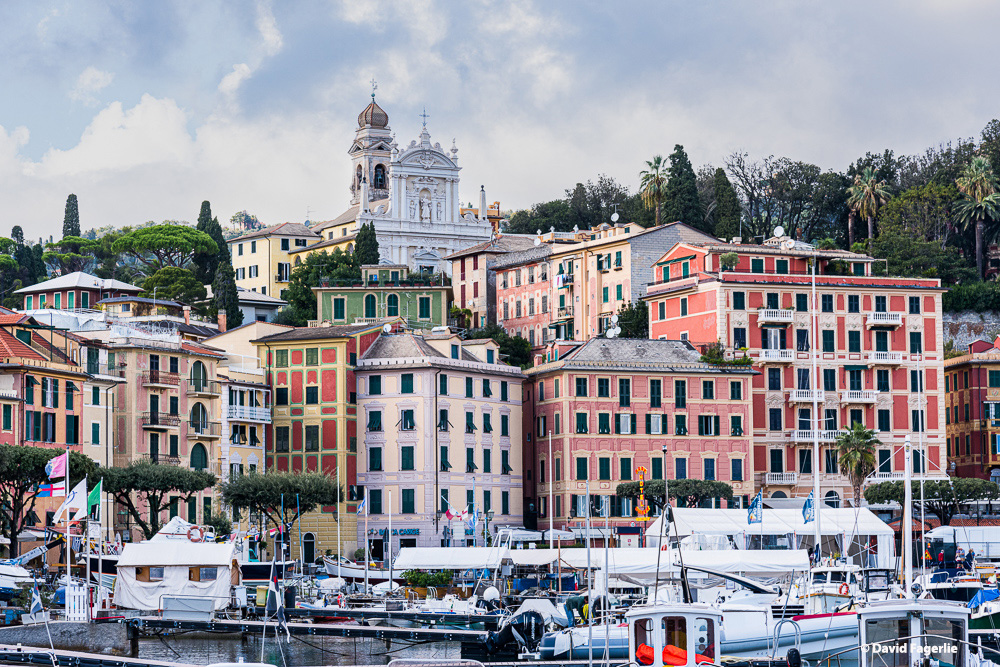
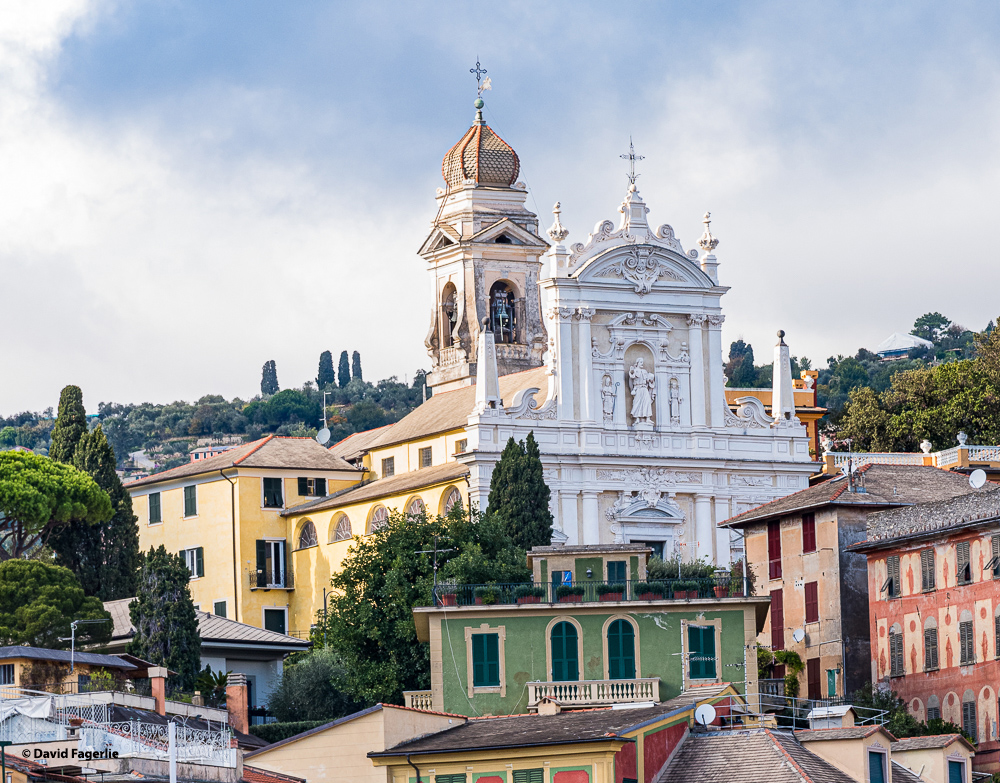
The bell tower on the right side of the next photo belongs to the Basilica of Santa Margherita, located elsewhere in the comune, which dates from the 15th century.
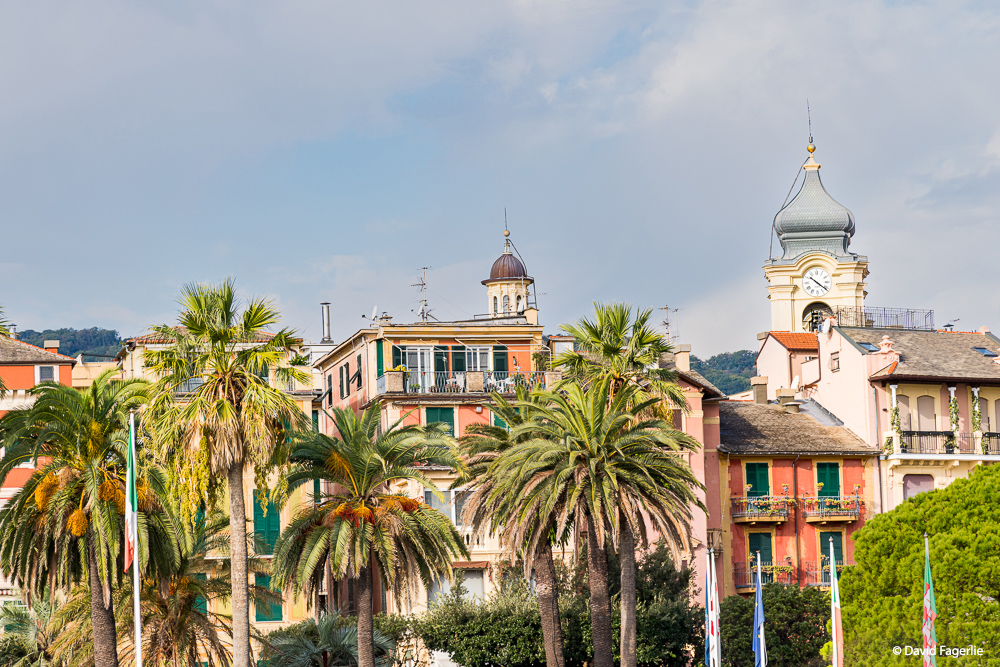
Still standing and visible in the next photo is Castello di Santa Margherita Ligure, built by the Republic of Genoa in 1550 as a fortress to defend against increasing attacks of North African pirates. After attacks ceased in the 18th century the fortress lost its relevancy. The building was restored after World War I and dedicated to the memory of fallen Italian soldiers.
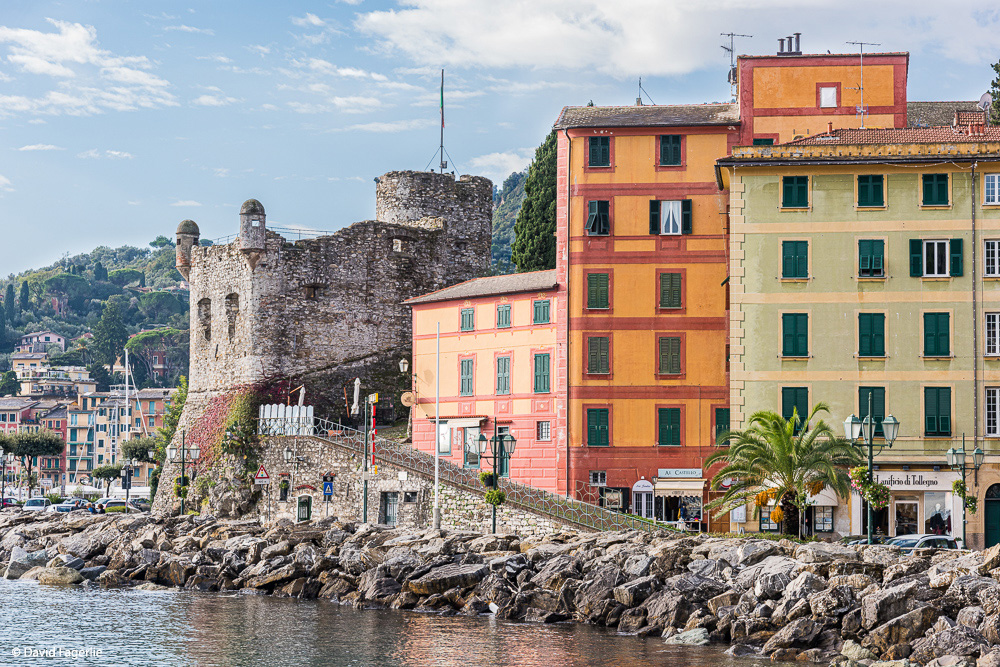
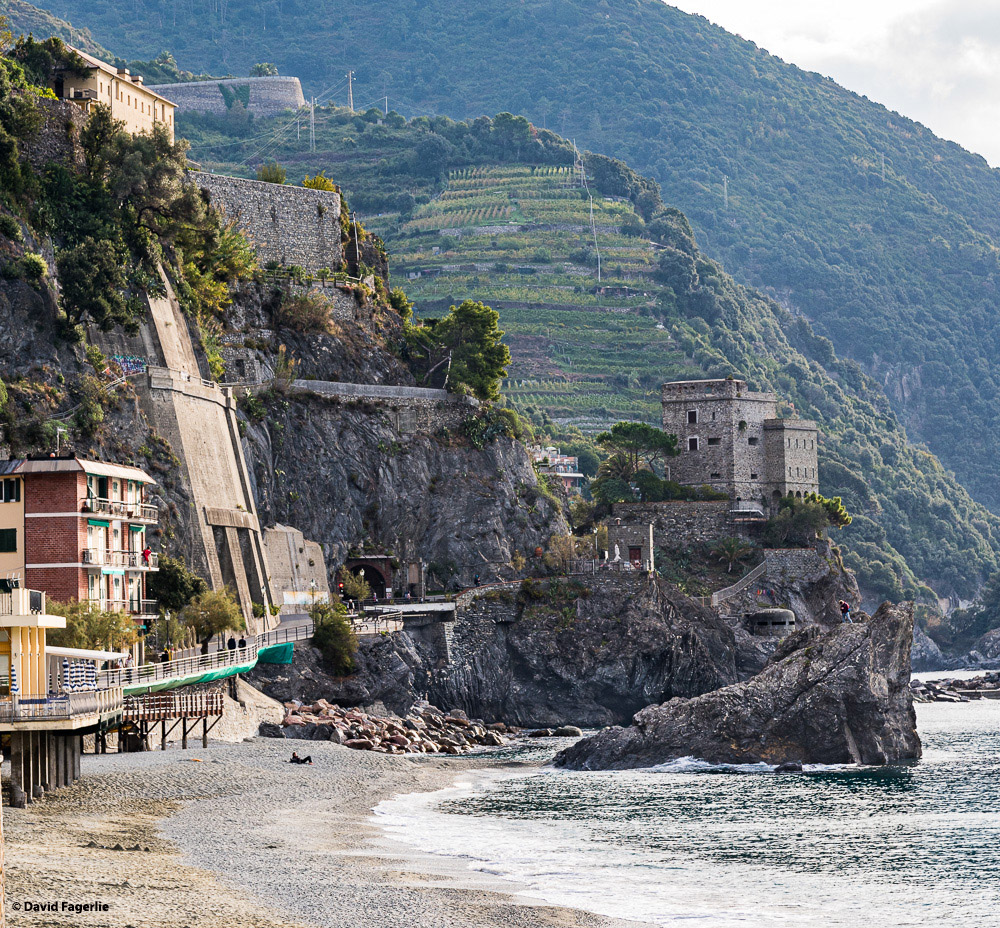
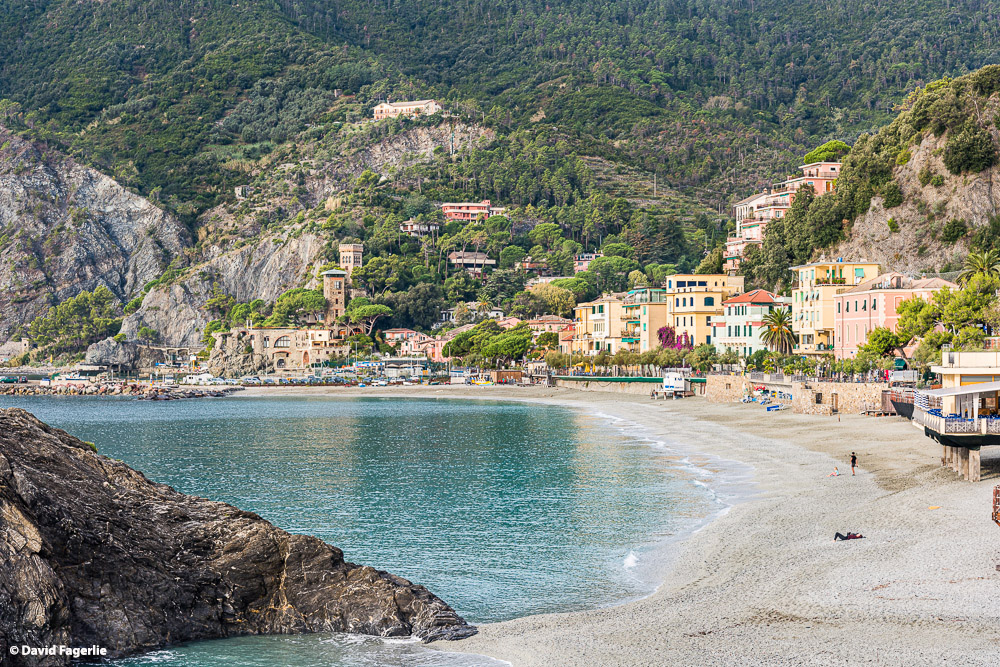
Cristopher Columbus was born in Genoa, a short distance to the north; however, he is purported to have lived in Santa Margherita for a time. The statue was created in 1892 by Italian sculptor Tabacchi.
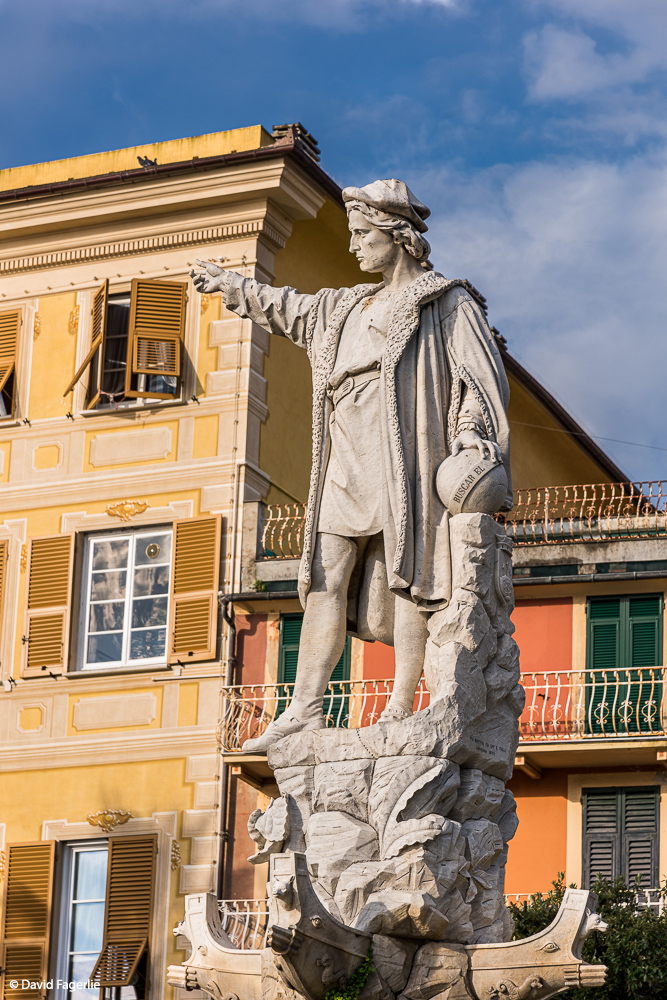
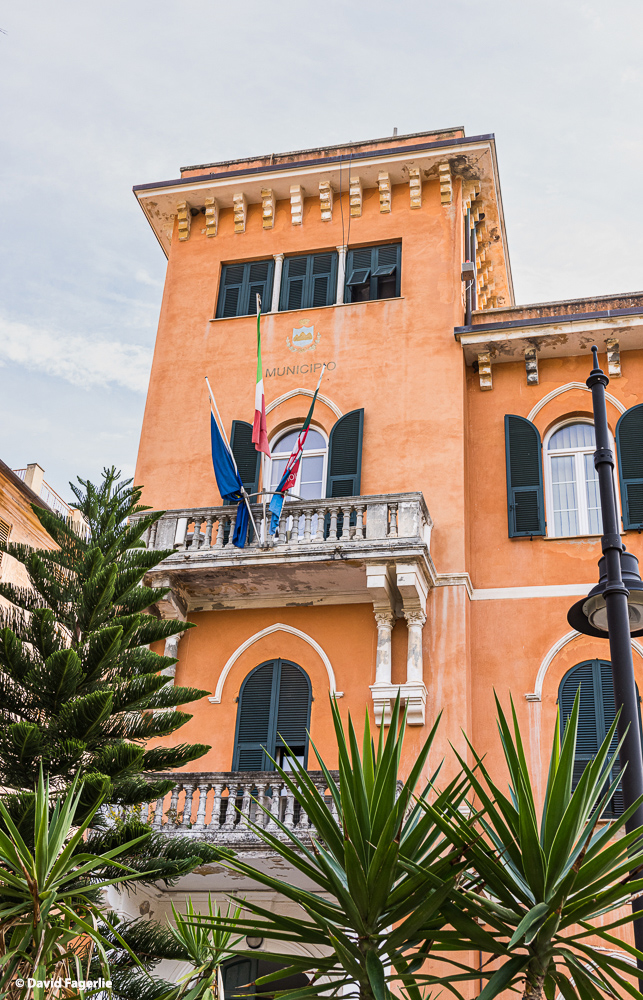
I love the look of the stripe design seen in so many Italian buildings, a couple shown here. In the first photo even the laundry seems to fit into the design.

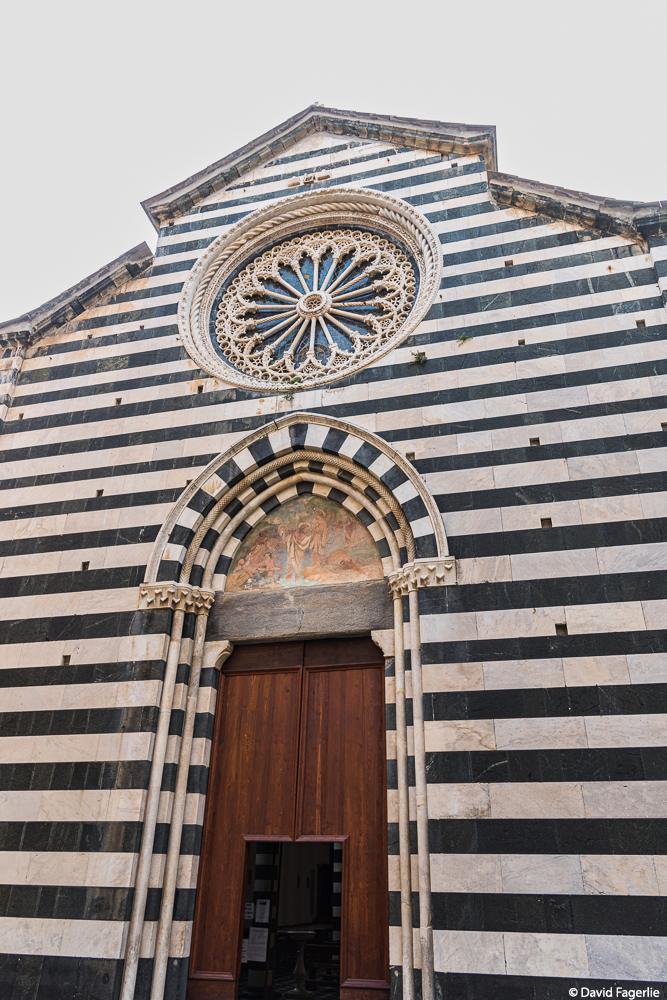
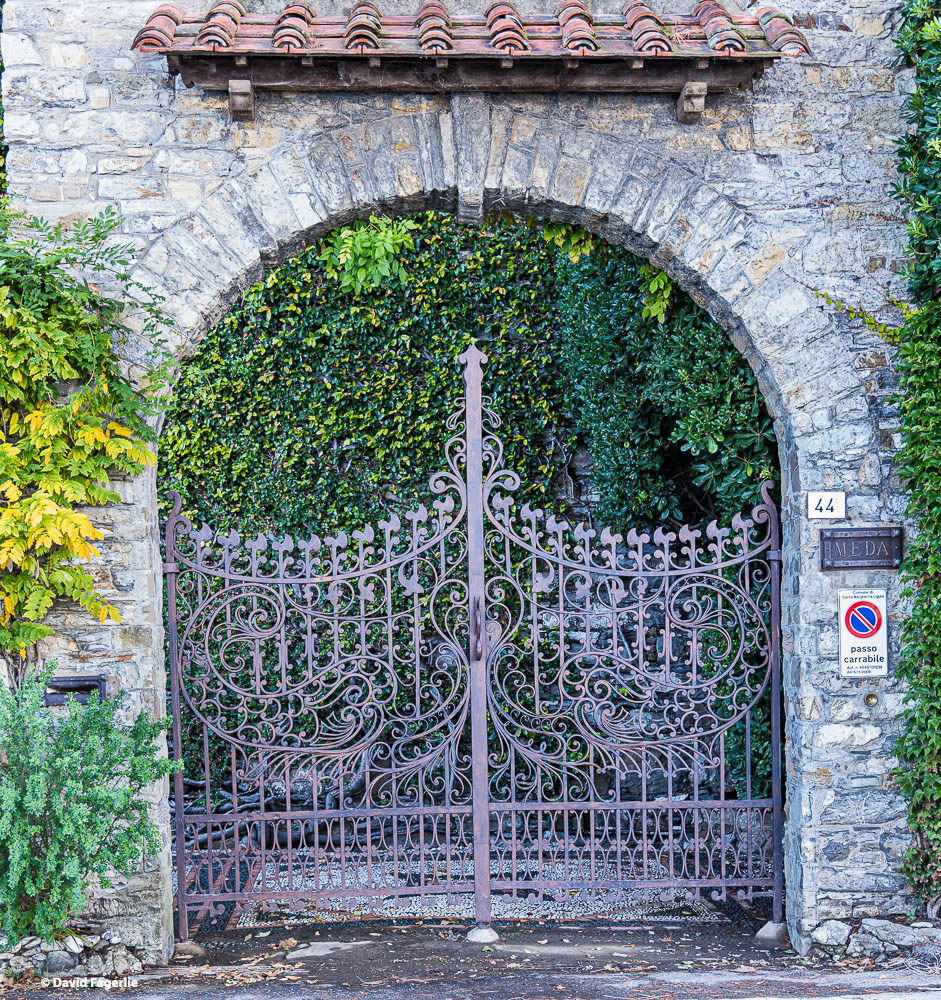


Cinque Terre
The fabled Cinque Terre is a section of coastline south of Santa Margherita with five small comunes built into seaside bluffs. Views from the water are quite spectacular. We docked for a while in Vernazza, the second comune from the north with the cream colored clock tower, then we continued our sailing to our final destination for the day, Portovenere.
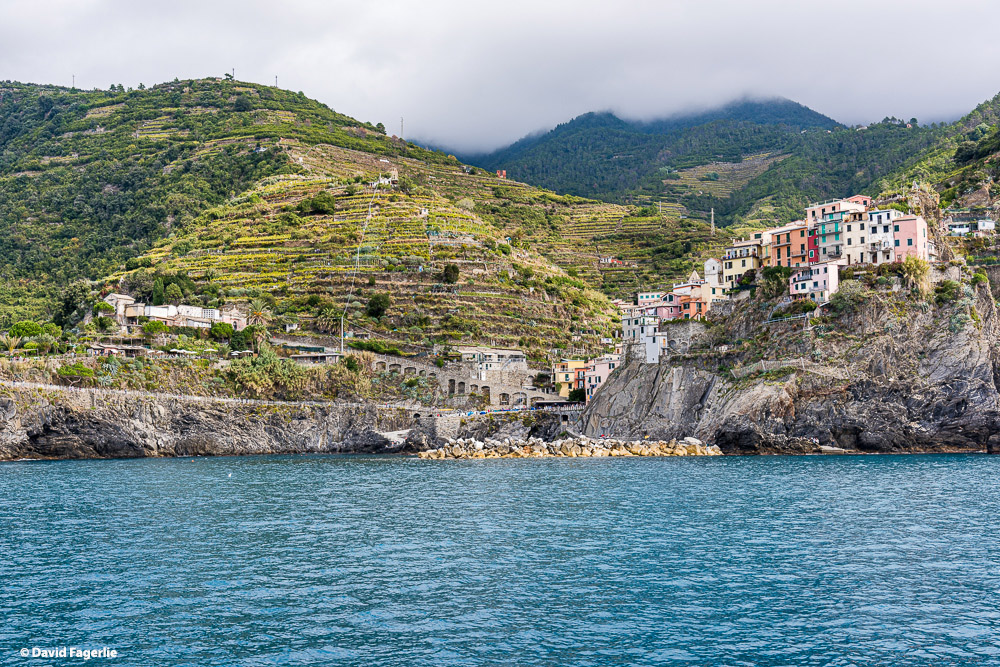
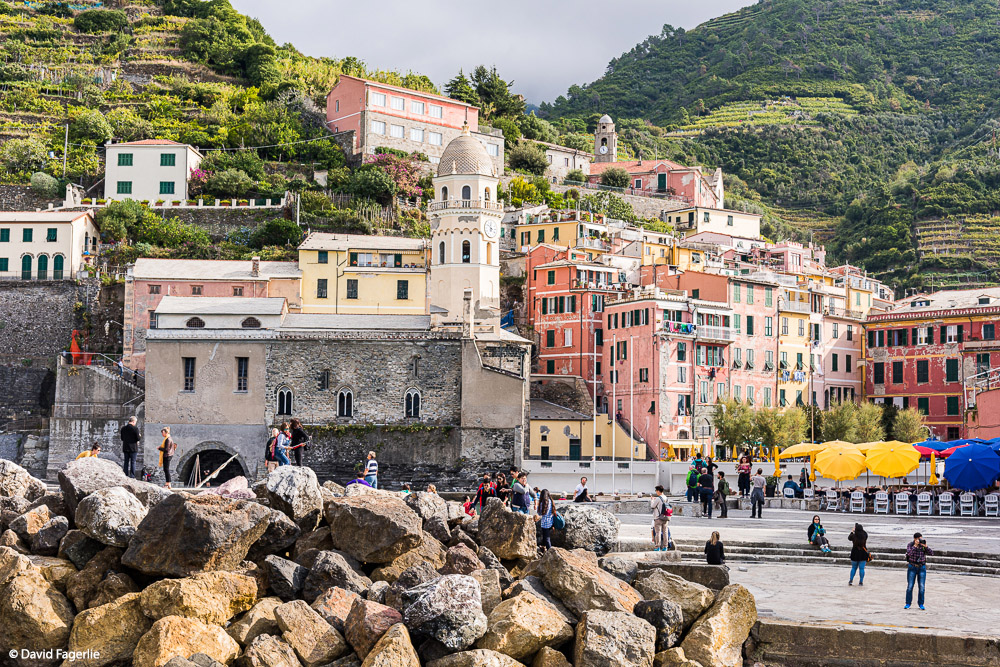
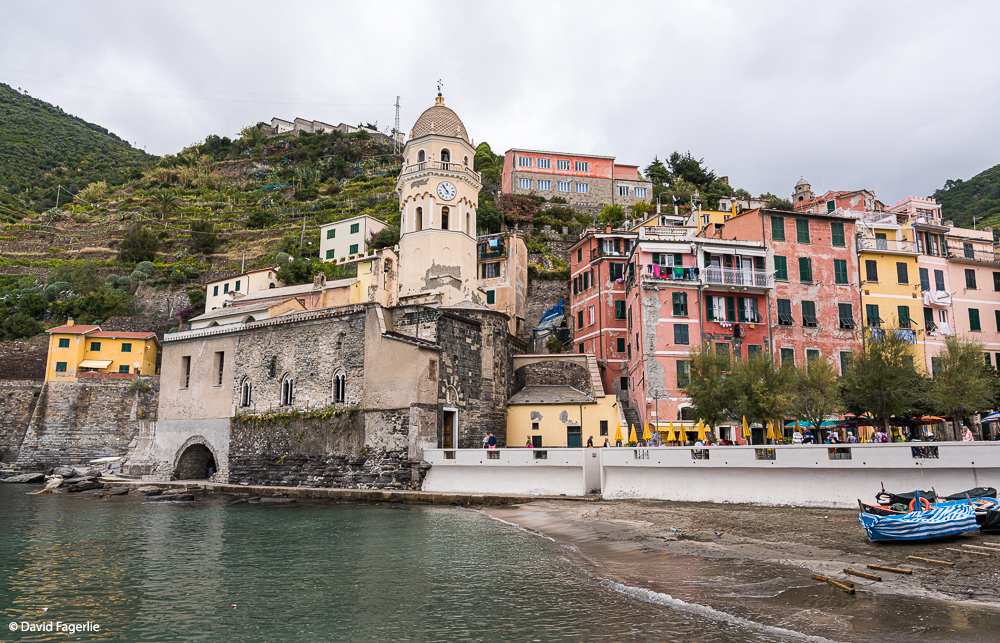
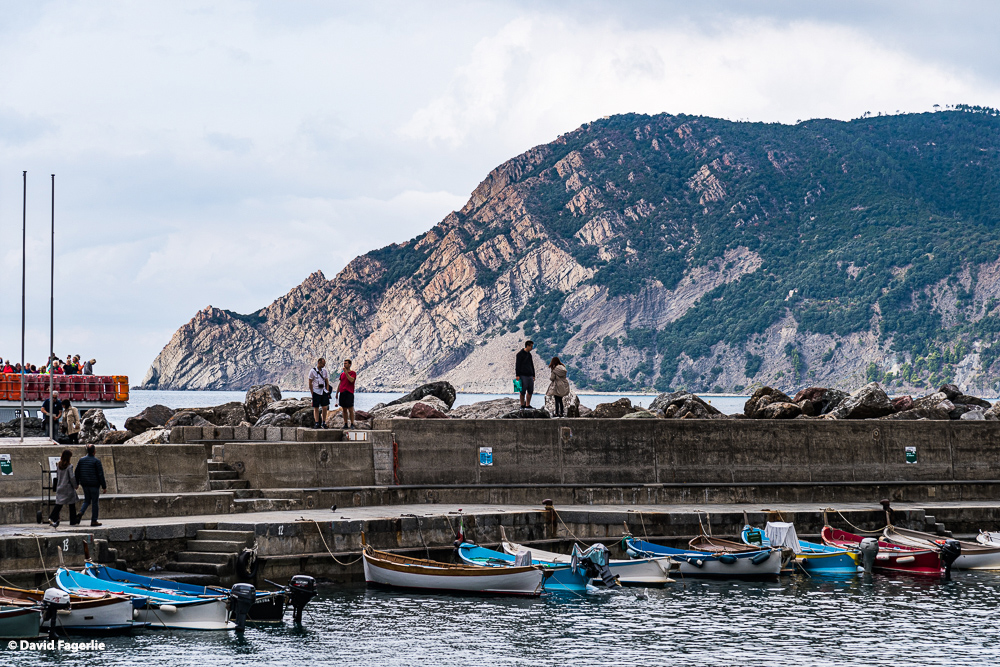
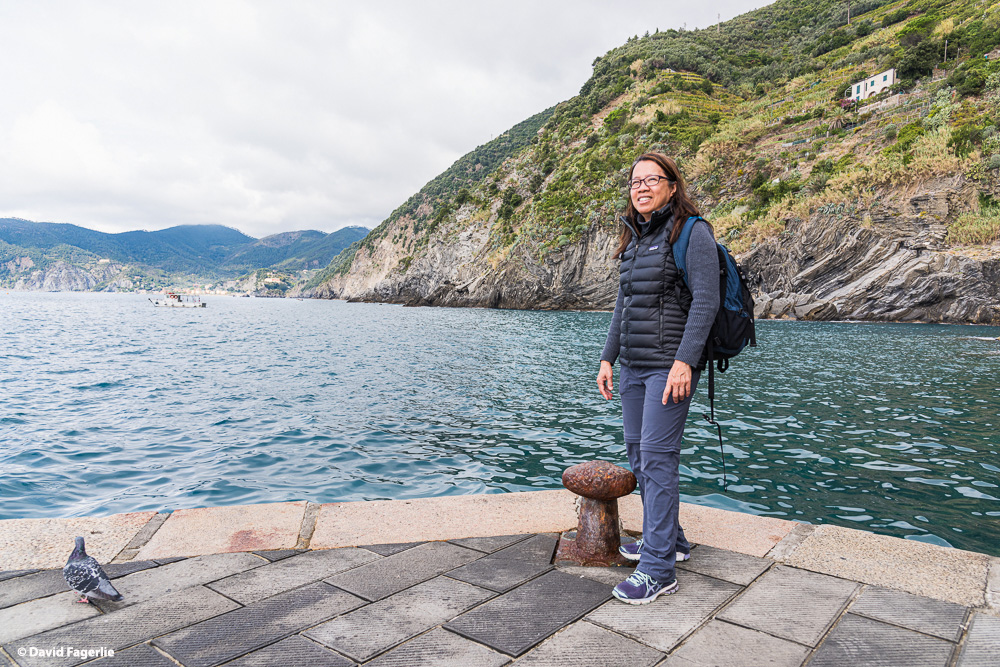
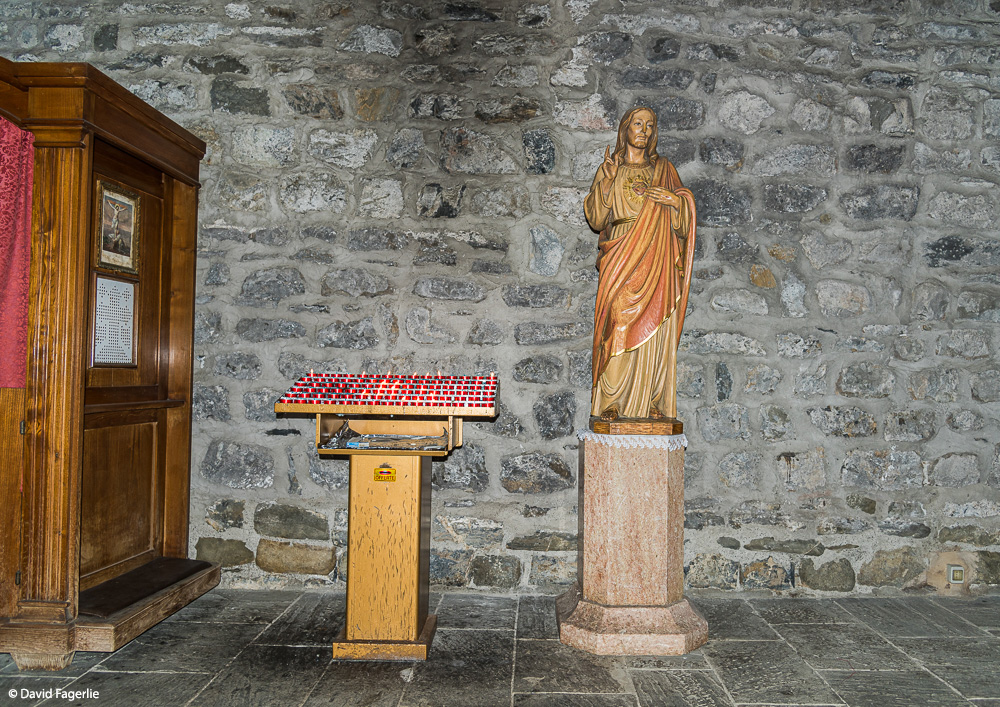
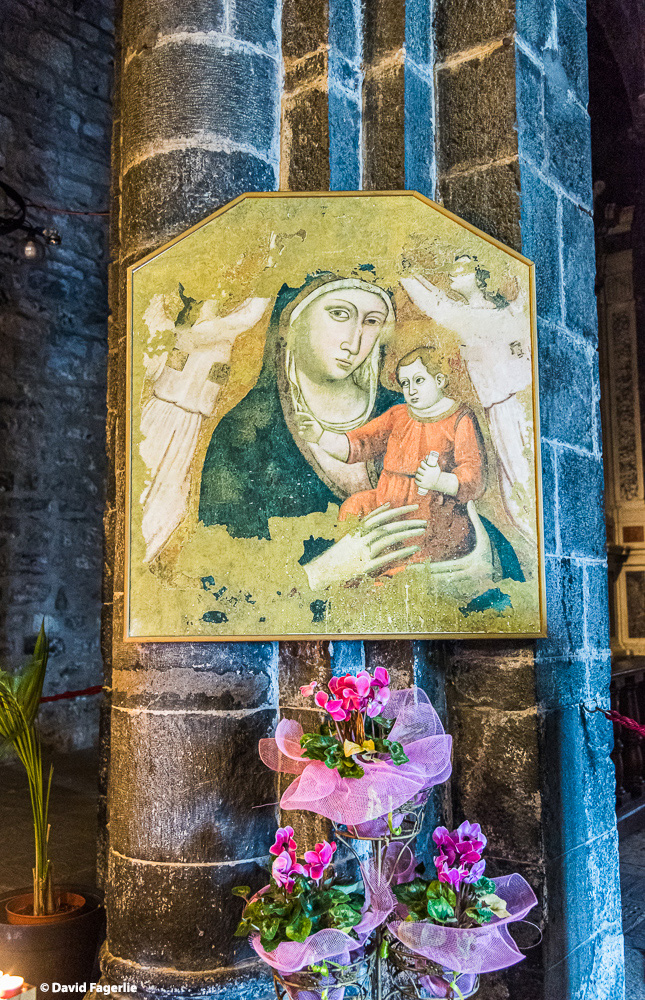
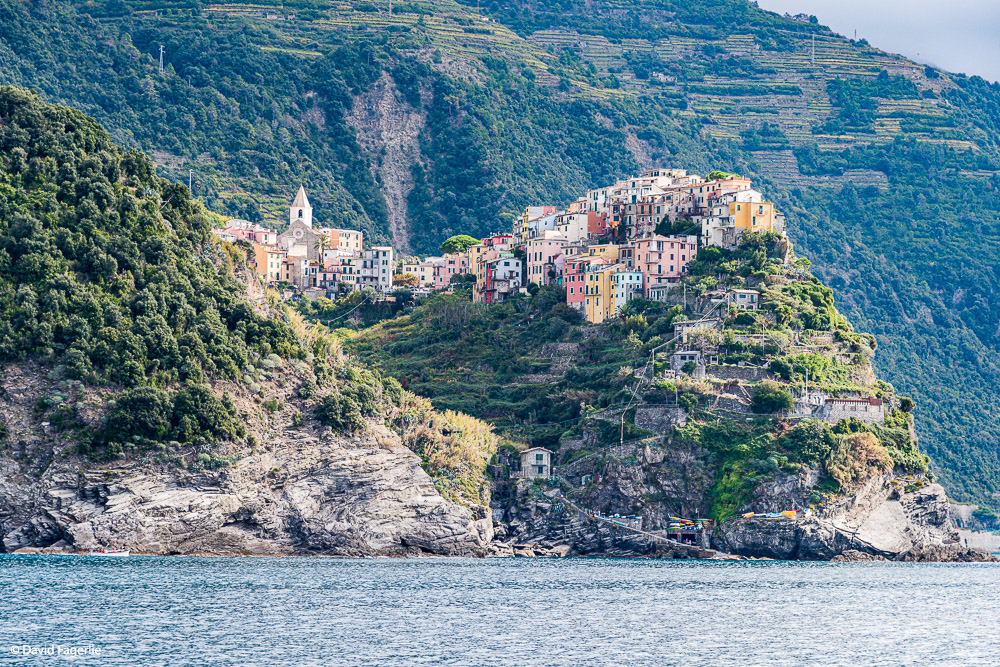
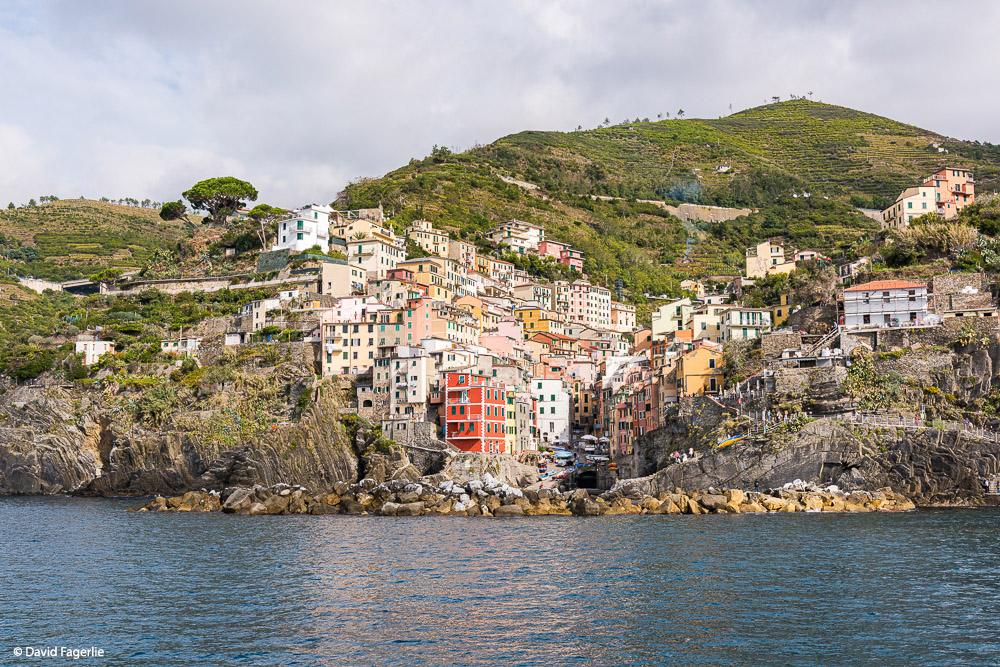
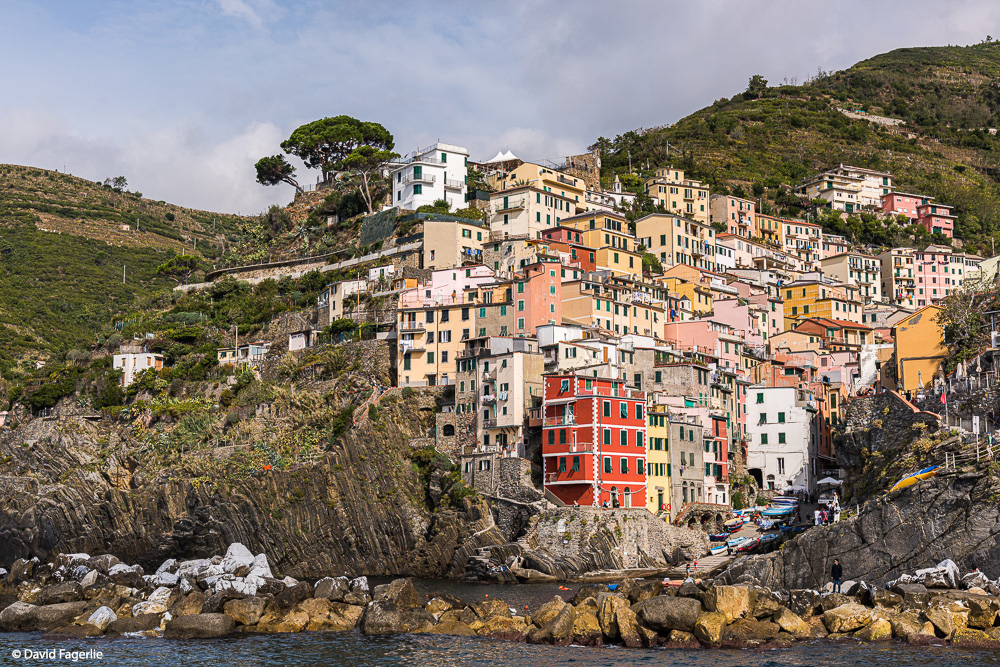
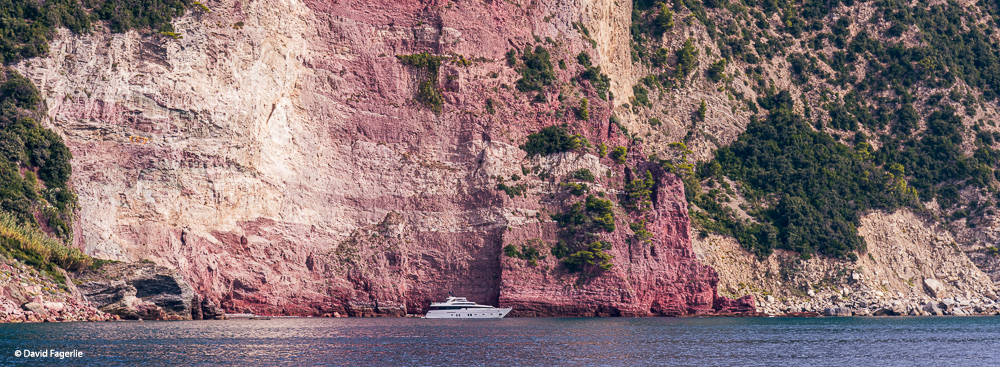
Portovenere
A short boat ride south of Cinque Terre, the first building of note was the western wall of a castle constructed from year 1113 and the outer walls in 1161. After sailing past the castle, on a prominent rock outcropping at the end of a peninsula, there were two buildings, both churches built years apart. The older structure to the north was built on the remains of a pagan temple dedicated to the goddess Venus Erycina and it was officially consecrated in 1198. The newer structure with a steeple and black and white bands dates back to the 13th century, probably between 1256 and 1277. Restorations were made between 1931 and 1935.
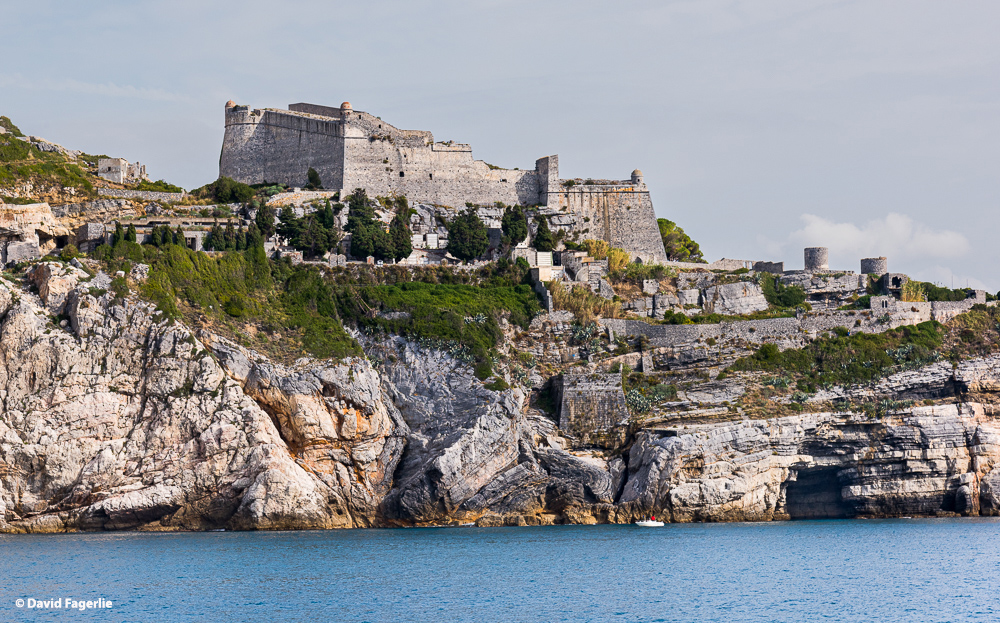

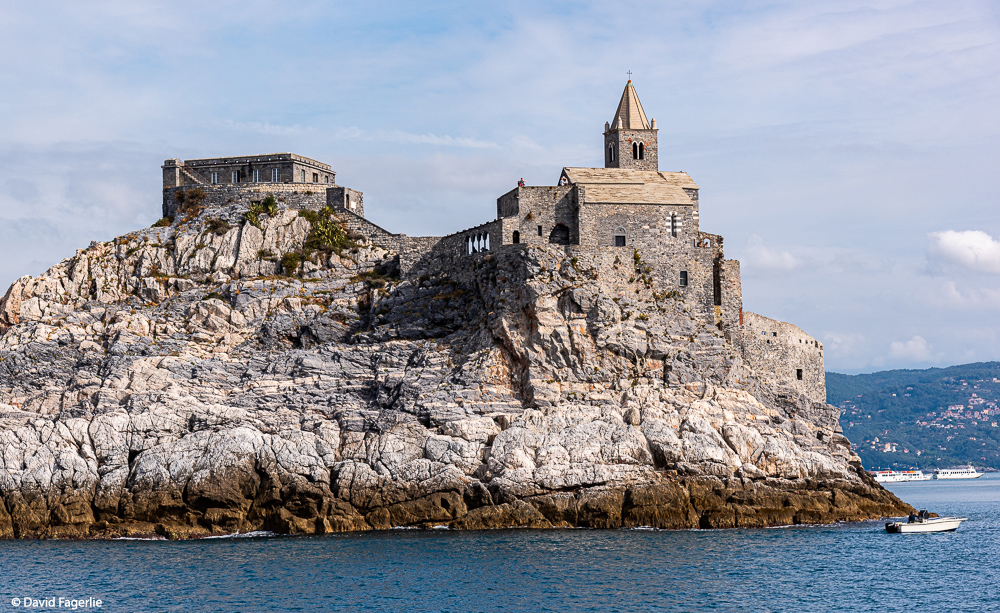

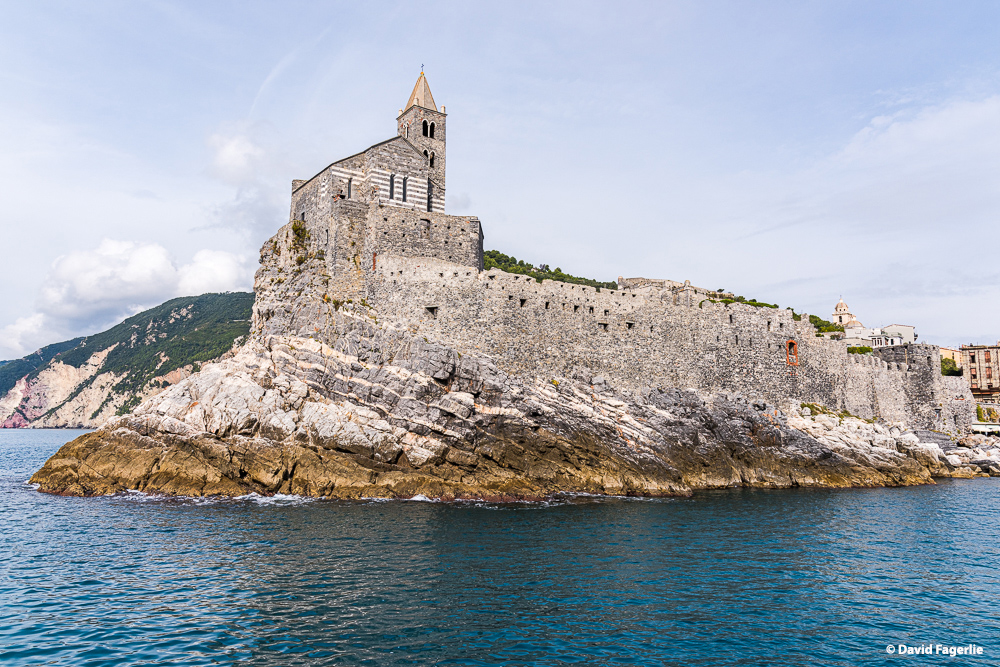
Perhaps a father and son or grandfather and grandson were walking on the rocks below the church, obviously enjoying their hike.
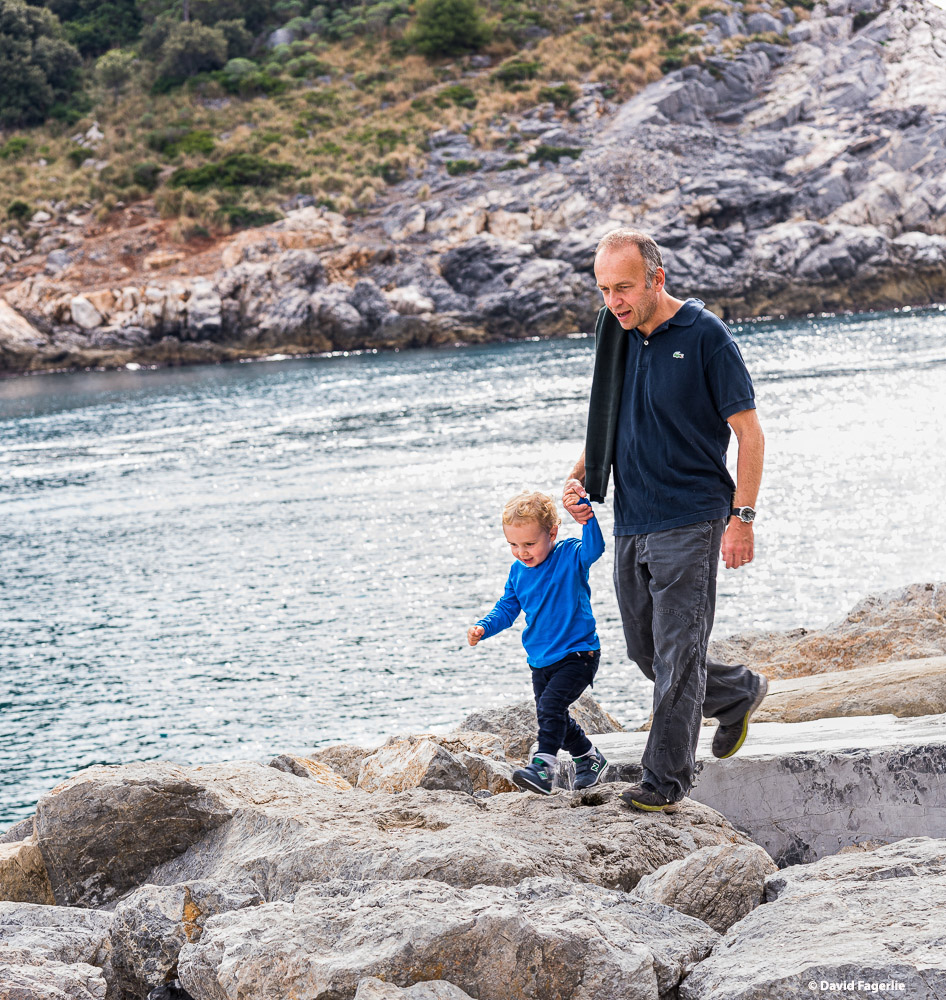
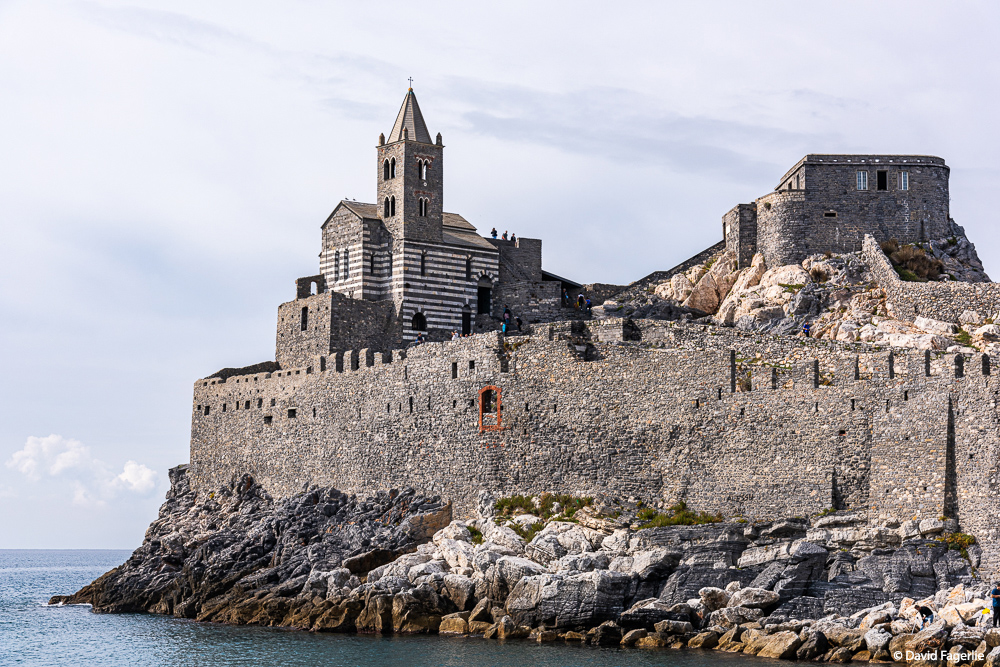
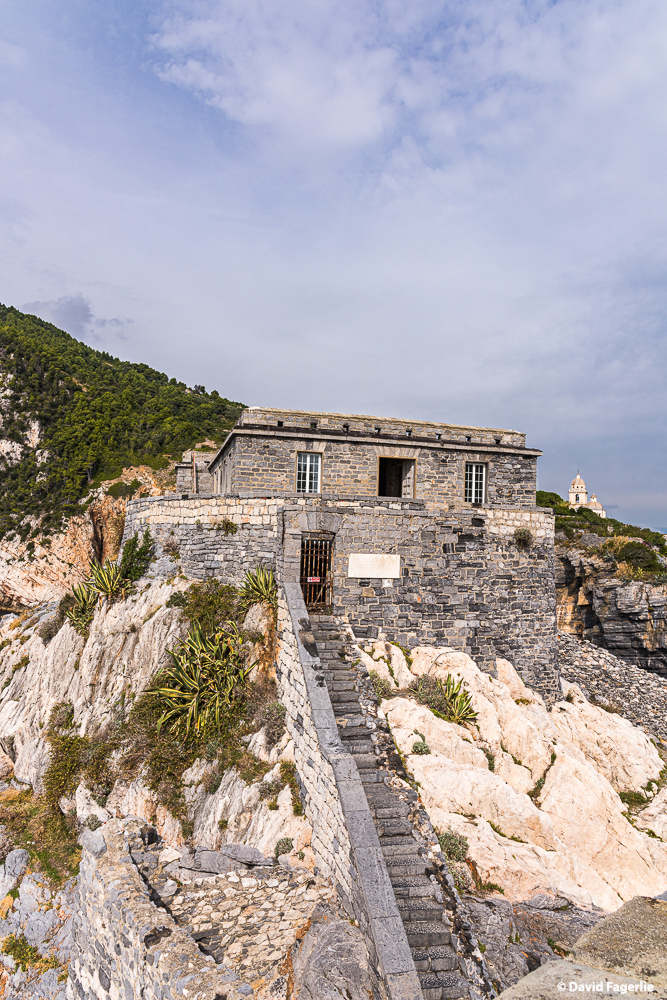
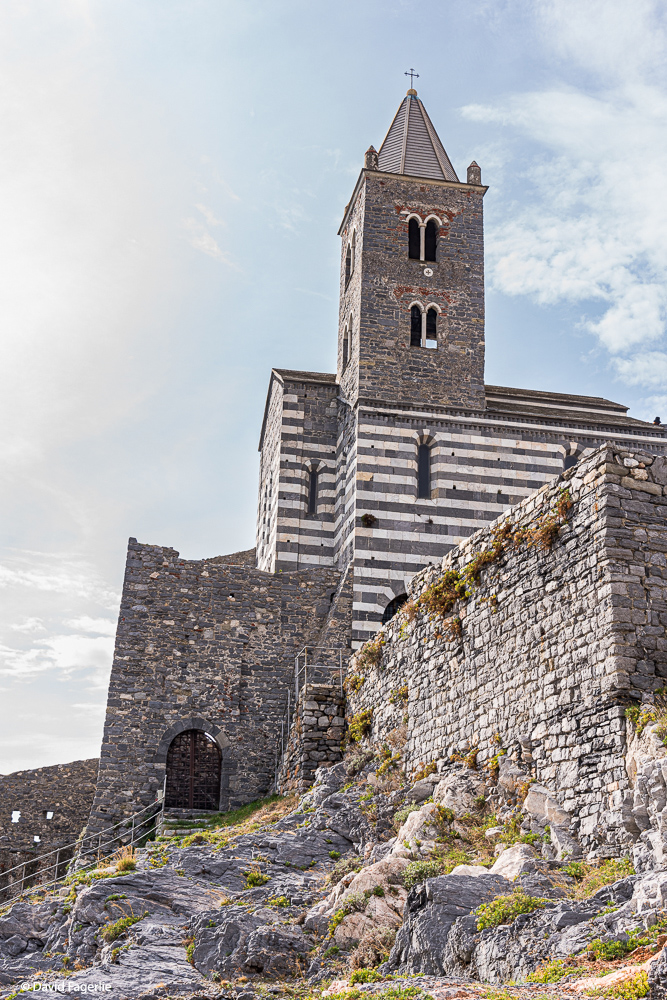
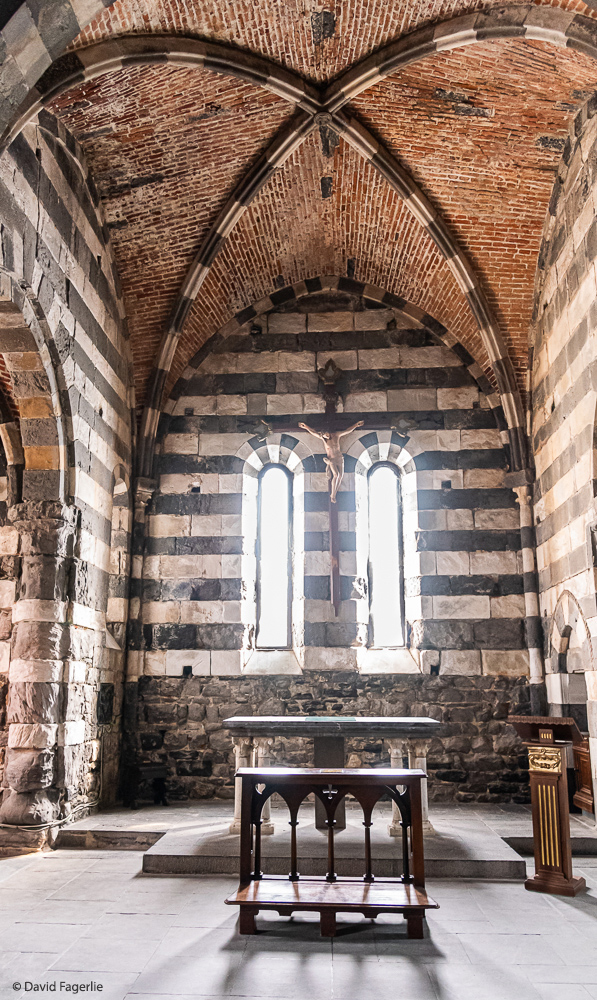
As our boat rounded the end of the peninsula the comune of Portovenere came into view. It is a beautiful town, colorful like the towns of Cinque Terre, with about 3,700 residents. Portovenere and the five comunes of Cinque Terre were designated UNESCO World Heritage Sites in 1997.
Portovenere, also spelled Porto Venere, dates back to the middle of the 1st century BCE as “Portus Veneris,” named in honor of the goddess Venus. In Roman times Portovenere was a fishing village. After the fall of the Western Roman Empire the comune became the base of the Byzantine fleet but was destroyed in 643 CE by the Lombards, a Germanic tribe that ruled much of Northern Italy from 568 to 774. Later, the comune suffered from Saracan raids, was subsequently ruled by various family empires into the 15th century and then by the First French Empire. Portovenere was incorporated into the Kingdom of Italy in 1861.
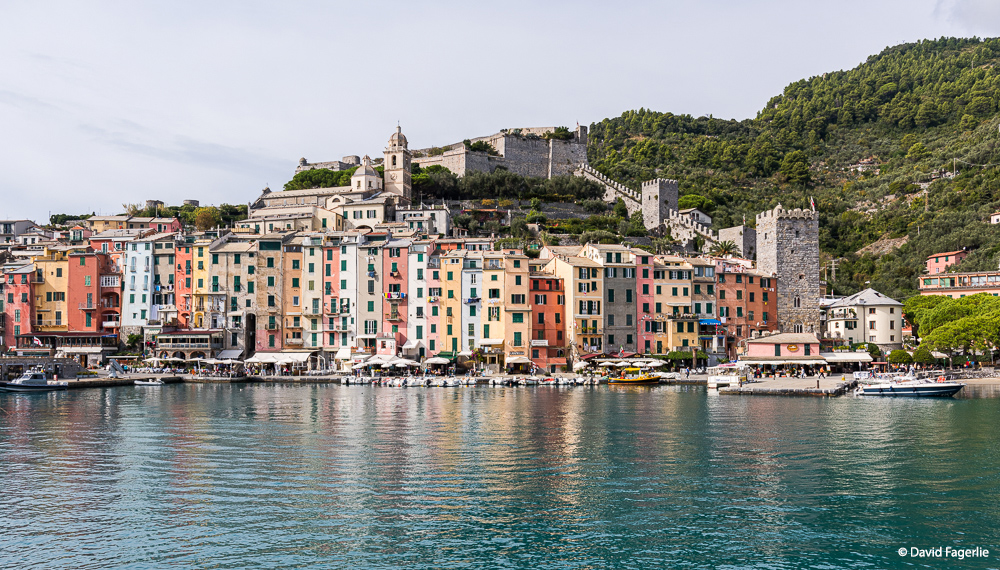
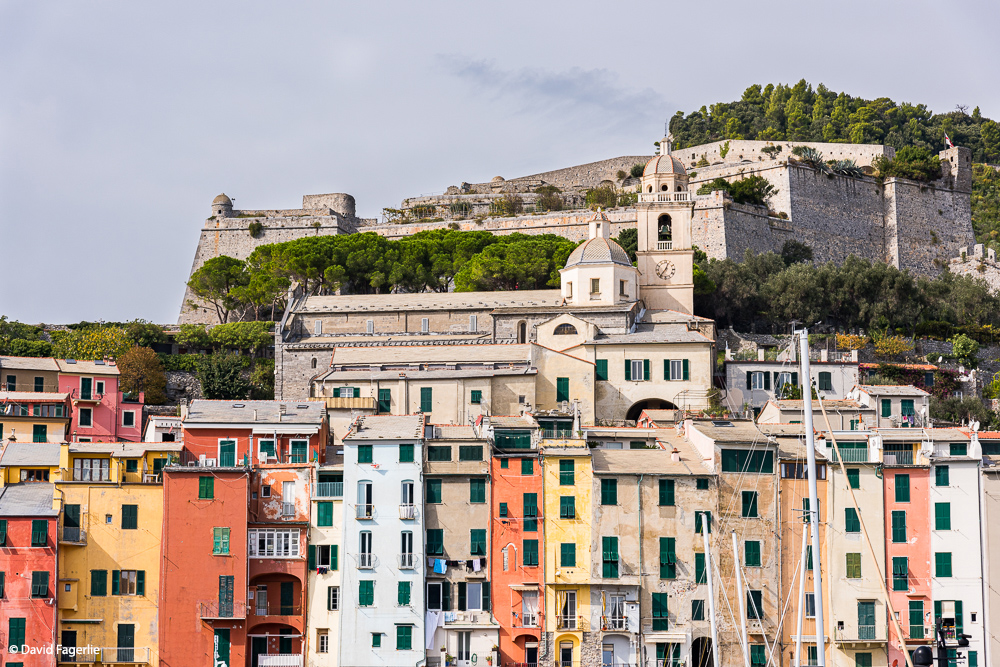
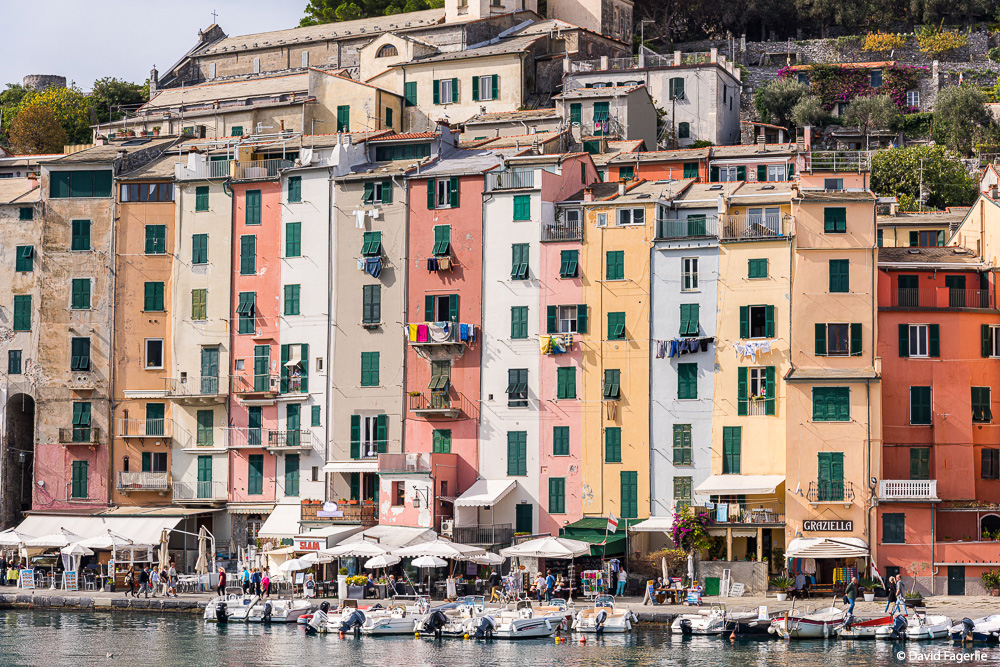
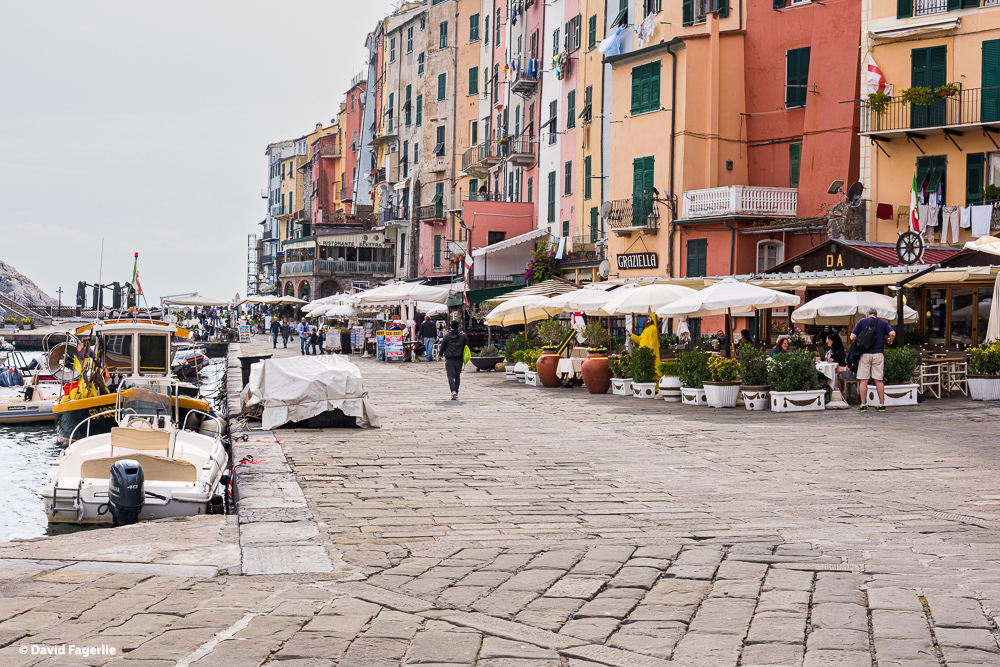
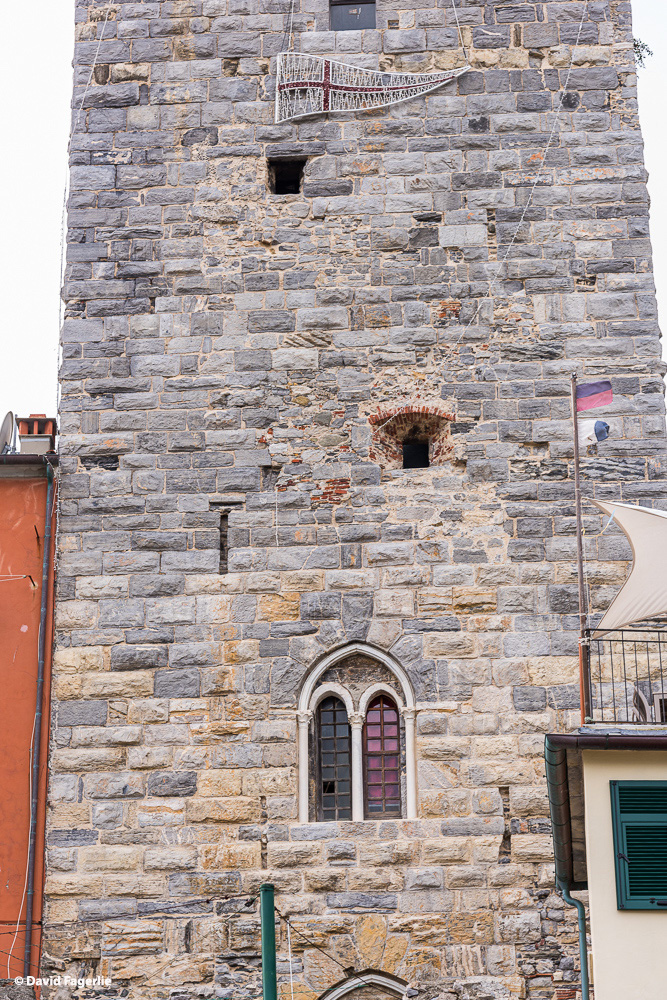
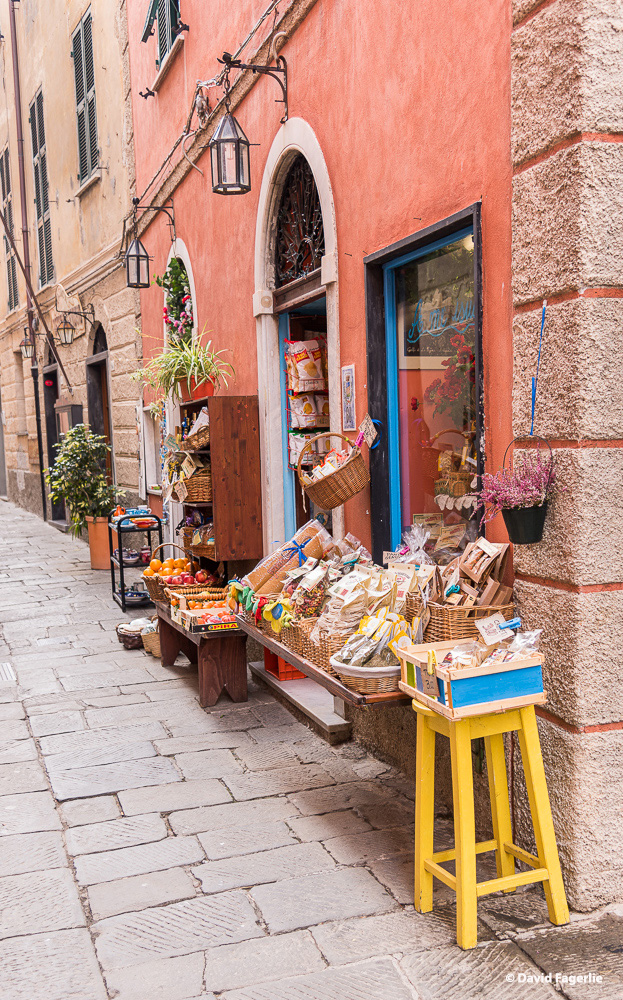
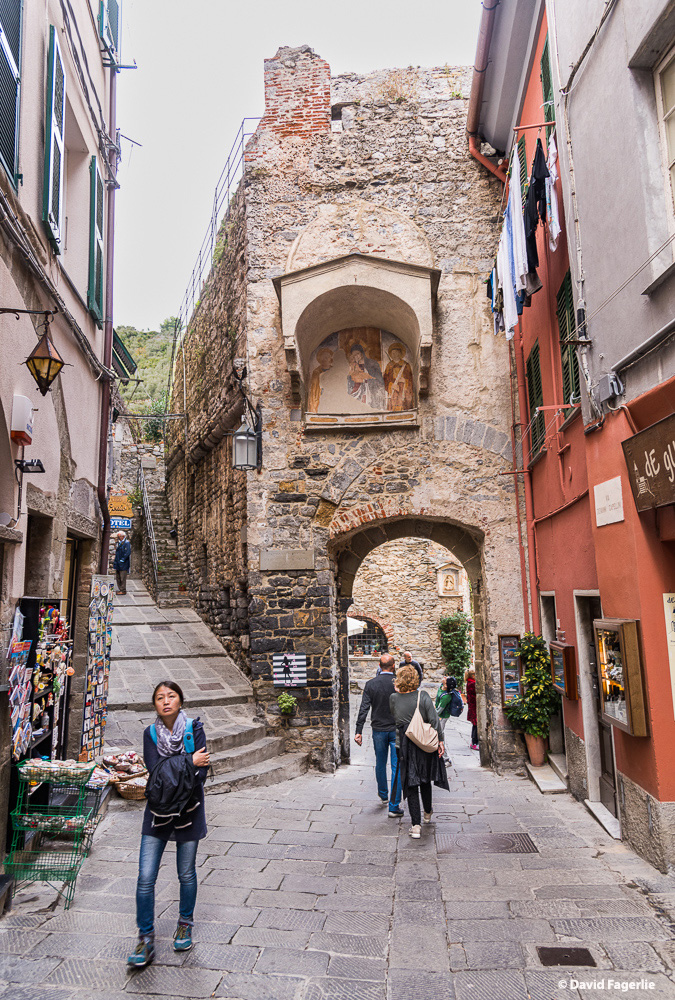

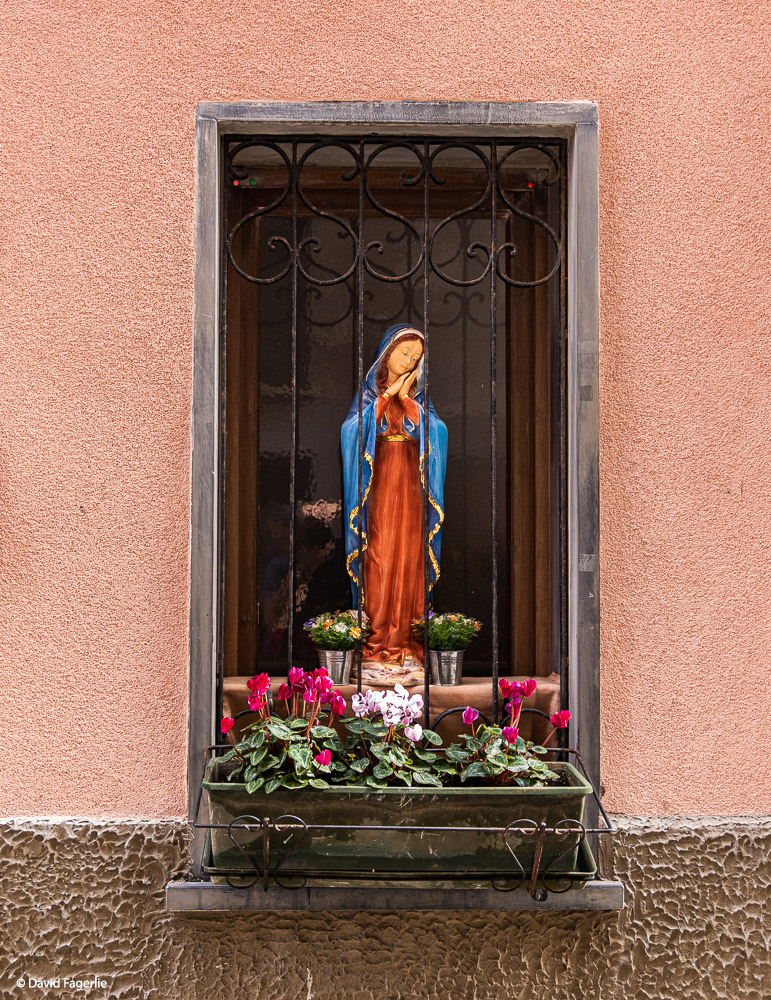

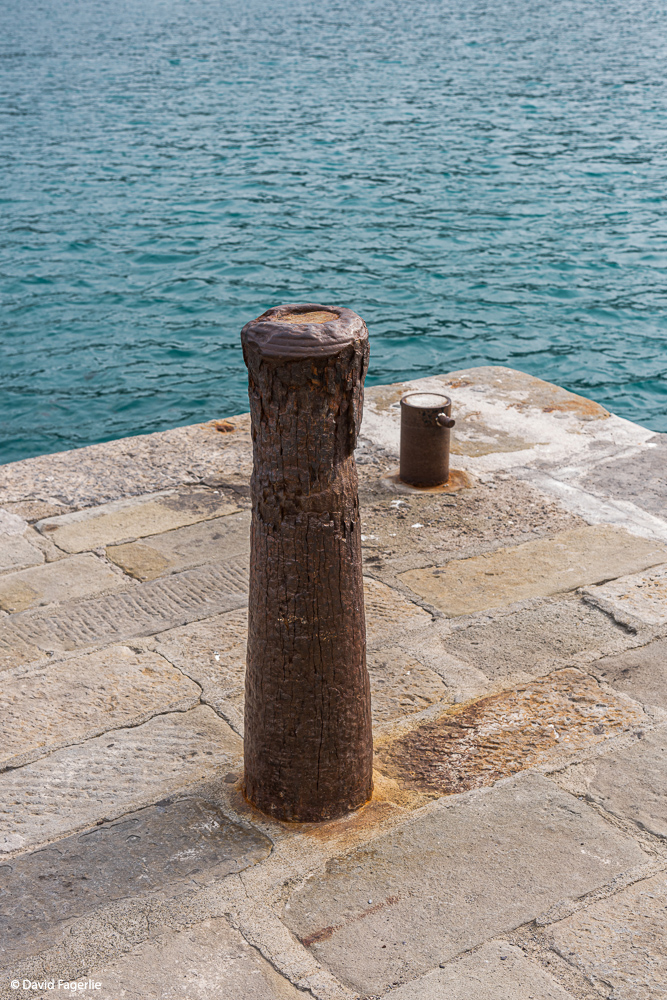
A higher resolution slide show of these images is in Galleries. You can access the gallery of this chapter directly by clicking HERE.
Next Monday we visit Portofino and then we head to Lucca in Tuscany. See you next week.

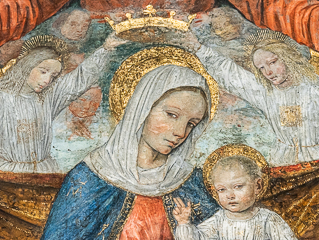
December 03, 2020
Chapter 8: Portofino & Lucca
Barely north of Santa Margherita is a stump of a peninsula that juts west into the Ligurian Sea.